
橡膠表面滑動摩擦磨損試驗機(jī) 表面狀態(tài)的影響
摩擦表面粗糙程度。潤滑劑的存在,磨損碎片,橡膠表面老化和環(huán)境濕度都會大大改變橡膠的摩擦性能
1.表面狀態(tài)不同時,摩擦的粘附成分變化明顯,特別是有潤滑劑時,粘附摩擦成分顯著減少。
2.潤滑和在橡膠制品表面涂有低摩擦系數(shù)的塑料,可以使摩擦系數(shù)減小,增大疲勞磨耗的成分,從而使磨耗減少。
橡膠表面滑動摩擦磨損試驗機(jī) 試樣要求
試樣表面平整,無氣泡、裂紋、分層、明顯雜質(zhì)和加工損傷等缺陷。每組試樣不少于3個。
橡膠摩擦磨耗的影響因素
橡膠的磨耗主要有三種形式:
1.磨損磨耗:粗糙表面上凸出的尖銳粗糙物不斷切割,刮擦
2.疲勞磨耗:硫化膠表面受周期性壓縮,剪切,拉伸等形變作用
3.卷曲磨耗:光滑表面接觸時硫化膠表面的微凹凸不平的地方發(fā)生變形。
主要配置及附件:(計算機(jī)控制)
1、試驗主機(jī)一臺
2、高精度扭矩傳感器一只
3、計算機(jī)數(shù)據(jù)采集卡一塊
4、計算機(jī)一臺(品牌)
5、彩色激光噴墨打印機(jī)一臺
6、計算機(jī)控制軟件一套
7、4Kg砝碼兩件(備用一套)
8、標(biāo)準(zhǔn)磨擦環(huán)四件(備用兩件)
9、產(chǎn)品使用說明書一份
10、產(chǎn)品合格證
11、產(chǎn)品裝箱單一份
12、整機(jī)重量:約87公斤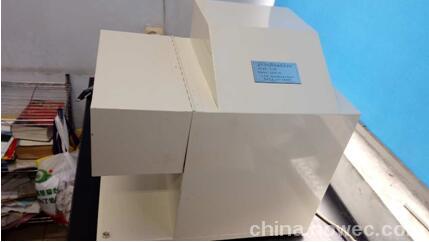
試驗步驟
1、圓環(huán)應(yīng)清除油污,貯存于干燥缸內(nèi)以防生銹。
2、試樣經(jīng)狀態(tài)調(diào)節(jié)后用感量為0.1毫克的分析天平稱取其質(zhì)量(M1)。
3、把試樣裝進(jìn)夾具,摩擦面用角尺校正并使它與圓環(huán)的交線外于試樣正中。裝好摩擦力矩記錄紙,開機(jī)校好零點。
4、再次用乙醇、丙酮等不與塑料起作用的溶劑仔細(xì)清除試樣和圓環(huán)上的油污,此后不準(zhǔn)再用手接觸試樣和圓環(huán)的表面。
5、平穩(wěn)地加荷至選定的負(fù)荷值。
6、對磨2小時后停機(jī)卸負(fù)荷,取下試樣和圓環(huán),清理試樣表面后,用精度不低于0.02毫米的量具測量磨痕寬度,或在試驗環(huán)境下存放1小時后稱取試樣質(zhì)量(m2)。
7、讀取摩擦力矩值。
適用范圍:
適用于塑料制品、橡膠制品、石墨板材或其他復(fù)合材料的滑動摩擦,磨損性能測試,也可對試驗中試樣的磨擦力、磨擦系數(shù)和磨損量進(jìn)行測定。也可對試驗中試樣的磨擦力、磨擦系數(shù)和磨損量進(jìn)行測定。
符合標(biāo)準(zhǔn):
GB/T 3960-1983塑料滑動摩擦磨損試驗方法GB/T 9141.8-1999柔性石墨板材滑動摩擦系數(shù)測試方法
摩擦磨損定義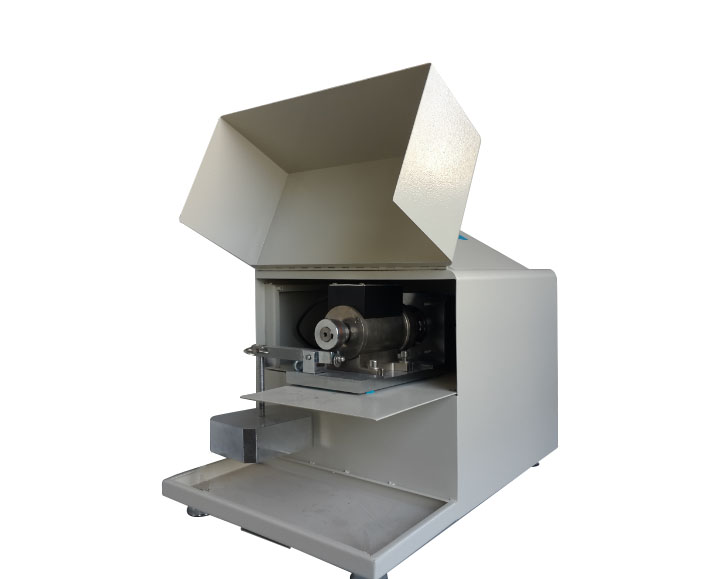
1、摩擦:兩物體接觸表面間產(chǎn)生阻礙切向相對移動的現(xiàn)象稱為摩擦。
2、滑動摩擦:兩接觸物體接觸點具有不同速度時之摩擦。
3、摩擦力:兩物體摩擦?xí)r相對移動的阻力。
4、摩擦系數(shù):阻礙兩物體相對運動的摩擦力對作用到物體表面的法向力之比。
5、磨損:物體相對運動時相互接觸表面的物質(zhì)不斷損失或產(chǎn)生殘余變形稱為磨損。
技術(shù)參數(shù):
1、試樣尺寸:30mm?7mm?6mm;
2、轉(zhuǎn)動速度: ≤200轉(zhuǎn)/分(可調(diào));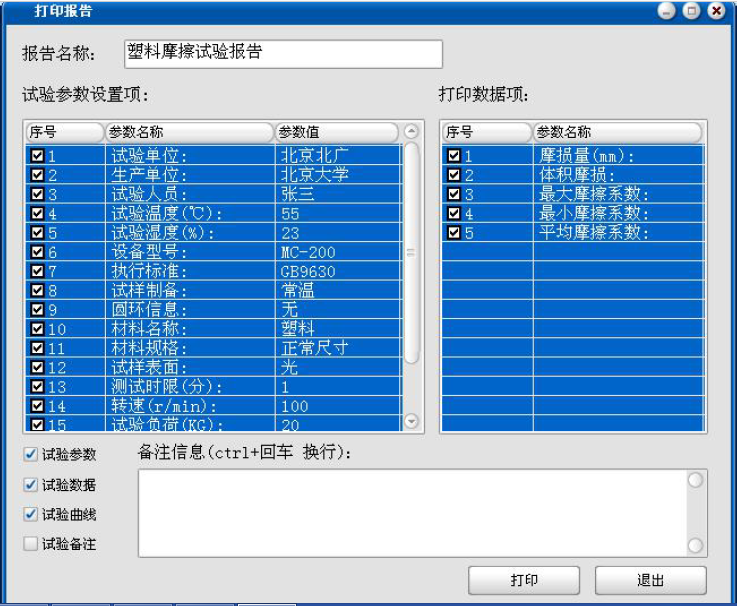
3、負(fù)荷:(20KG)196N?0.1%,可增至(40KG)392N;
4、摩擦環(huán)尺寸:≥¢40?10mm,倒角≥0.5?45?,外圓表面與內(nèi)圓同心度偏差≤0.01;
5、摩擦環(huán)材質(zhì):45號鋼;
6、摩擦力矩:0—4N.m;
7、砝碼重量:4KG砝碼十件,1KG砝碼十件,可實現(xiàn)重量疊加功能;
8、精度:速度精度≤1%;負(fù)荷精度≤0.5%;摩擦力矩精度≤1%;計數(shù)器精度≤1S;傳感器測量精度≤1%F。
狀態(tài)調(diào)節(jié)
狀態(tài)調(diào)節(jié)按GB2918-82《塑料試樣狀態(tài)調(diào)節(jié)和試驗的標(biāo)準(zhǔn)環(huán)境》進(jìn)行,溫度為23?5攝氏度,溫度為50?10%。
試驗條件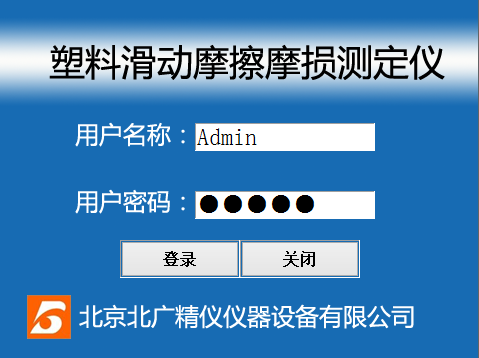
試驗中上轉(zhuǎn)軸保持靜止,下轉(zhuǎn)軸以200轉(zhuǎn)/分轉(zhuǎn)動,摩擦副做滑動摩擦,對磨2小時,負(fù)荷20公斤,根據(jù)材料,允許選擇其它負(fù)荷.試驗環(huán)境溫度為23?5攝氏度.
精度Precision:
1、速度精度:1%
2、負(fù)荷精度:0.5%
3、摩擦力矩精度:1%
4、計數(shù)器精度:1S
5、傳感器測量精度:1% FS
功能特點:
1、試樣尺寸:30mm?7mm?6mm
2、轉(zhuǎn)動速度:0-500轉(zhuǎn)/分 (可調(diào))
3、負(fù) 荷:196N?0.1%(可增至392N)
4、摩擦環(huán)尺寸:¢40?10mm,倒角0.5?45?,外圓表面與內(nèi)圓同心度偏差小于0.01
5、摩擦環(huán)材質(zhì):45號鋼,淬火,熱處理HRC40-45,外圓表面光潔度▼8
6、摩擦力矩:0--4N?m
7、砝碼重量:4KG砝碼一件,1KG砝碼4件,可實現(xiàn)重量疊加功能。
適用范圍及功能
符合標(biāo)準(zhǔn):GB/T 3960-1983塑料滑動摩擦磨損試驗方法GB/T 9141.8-1999柔性石墨板材滑動摩擦系數(shù)測試方法
另外本廠生產(chǎn)的計算機(jī)控制塑料滑動摩擦試驗機(jī)是在現(xiàn)有電子塑料滑動摩擦試驗機(jī)的基礎(chǔ)上又增加了很多試驗功能,可以同時顯示扭矩-時間曲線,隨意設(shè)定試驗次數(shù),顯示當(dāng)前試驗次數(shù),
設(shè)定時間及當(dāng)前試驗時間等多種功能,本機(jī)還配有彩色打印機(jī),可以打印出帶有曲線,表格數(shù)據(jù),試驗單位名頭的精美的試驗報告單。
The influence of surface condition
The roughness of the friction surface. The presence of lubricants, wear debris, aging of rubber surfaces, and environmental humidity can greatly alter the friction performance of rubber
1. When the surface condition is different, the adhesive components of friction change significantly, especially when there is lubricant, the adhesive friction components are significantly reduced.
Lubricating and coating the surface of rubber products with low friction coefficient plastic can reduce the friction coefficient, increase the composition of fatigue wear, and thus reduce wear.
Sample requirements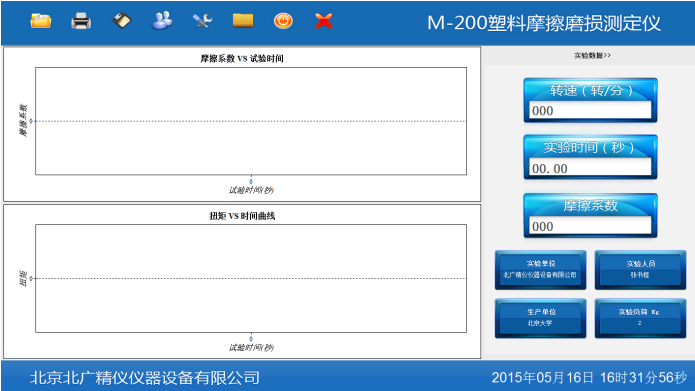
The surface of the sample is flat, without defects such as bubbles, cracks, delamination, obvious impurities, and processing damage. Each group of samples shall not be less than 3.
The influencing factors of rubber friction and wear
There are three main forms of rubber wear:
1. Wear and tear: Sharp and rough objects protruding from rough surfaces constantly cut and scrape
2. Fatigue wear: The surface of vulcanized rubber is subjected to cyclic compression, shear, tensile and other deformation effects
3. Curling wear: Deformation occurs in the slightly uneven areas on the surface of the vulcanized rubber when in contact with a smooth surface.
Main configuration and accessories: (computer control)
1. One test host
2. One high-precision torque sensor
3. One computer data acquisition card
4. One computer (brand)
5. One color laser inkjet printer
6. A set of computer control software
7. Two 4Kg weights (one spare set)
8. Four standard friction rings (two spare)
9. One copy of the product user manual
10. Product Qualification Certificate
11. Product packing list copy
12. Overall weight: approximately 87 kilograms
Test steps
1. The circular ring should be cleaned of oil stains and stored in a drying cylinder to prevent rusting.
2. After adjusting the state of the sample, weigh its mass (M1) using an analytical balance with a sensitivity of 0.1 milligrams.
3. Insert the sample into the fixture, calibrate the friction surface with an angle ruler, and ensure that its intersection with the circular ring is outside the center of the sample. Install the friction torque recording paper and turn on the machine to calibrate the zero point.
4. Carefully remove the oil stains on the sample and ring using solvents such as ethanol and acetone that do not interact with the plastic. Afterwards, do not touch the surface of the sample and ring with your hands.
5. Load steadily to the selected load value.
6. After grinding for 2 hours, stop the machine to unload the load, remove the sample and ring, clean the surface of the sample, measure the width of the grinding mark with a measuring tool with an accuracy of no less than 0.02 millimeters, or weigh the sample mass (m2) after storing in the test environment for 1 hour.
7. Read the friction torque value.
Applicable scope:
Suitable for sliding friction and wear performance testing of plastic products, rubber products, graphite sheets, or other composite materials. It can also measure the friction force, friction coefficient, and wear amount of the specimens in the test. It is also possible to measure the friction force, friction coefficient, and wear amount of the specimen in the experiment.
Compliant with standards:
GB/T 3960-1983 Test Method for Sliding Friction and Wear of Plastics GB/T 9141.8-1999 Test Method for Sliding Friction Coefficient of Flexible Graphite Sheet
Definition of Friction and Wear
1. Friction: The phenomenon of obstructing tangential relative movement between two objects in contact with each other is called friction.
2. Sliding friction: The friction between two objects in contact at different speeds.
3. Friction force: relative displacement between two objects when they rub against each other
售后服務(wù)
一、安裝調(diào)試:協(xié)助試驗機(jī)的安裝,負(fù)責(zé)試驗機(jī)的運輸、調(diào)試。
二、驗收標(biāo)準(zhǔn):試驗機(jī)按訂貨技術(shù)附件進(jìn)行驗收。終驗收在買方進(jìn)行,對用戶提供的試樣進(jìn)行試驗,并提供測試報告。
三、培訓(xùn):安裝調(diào)試同時,在儀器操作現(xiàn)場一次性免費培訓(xùn)操作人員2-3名,該操作人員應(yīng)是由需方選派的長期穩(wěn)定的員工,培訓(xùn)后能夠?qū)υO(shè)備基本原理、軟件使用、操作、維護(hù)事項理解和應(yīng)用,使人員能夠獨立操作設(shè)備對樣品進(jìn)行檢測、分析,同時能進(jìn)行基本的維護(hù)。
四、軟件升級:終生免費提供新版本控制軟件。
業(yè)務(wù)咨詢:932174181 媒體合作:2279387437 24小時服務(wù)熱線:15136468001 盤古機(jī)械網(wǎng) - 全面、科學(xué)的機(jī)械行業(yè)免費發(fā)布信息網(wǎng)站 Copyright 2017 PGJXO.COM 豫ICP備12019803號